How to Brew a Balanced Cup: Avoiding Over-Extraction
Perfecting the art of brewing a balanced cup of coffee hinges on avoiding over-extraction, where bitterness overwhelms flavor. Begin with understanding the coffee brewing ratio. This is a crucial guidepost in how to brew coffee, dictating the optimal measure of coffee to water, typically around a 1:15 ratio. Utilize freshly ground beans to unlock vibrant flavors. Focus on a consistent grind size, as excessive fine particles can lead to over-extraction. Monitor the water temperature closely, aiming for a range between 195°F to 205°F, as too hot can expedite over-extraction too. Pay attention to the brewing time; aim for a 3-4 minute duration, adjusting as necessary to achieve a harmonious extraction. Through precision and practice, you'll discover the perfect balance for an exquisite cup.

Understanding Over Extraction in Coffee Brewing
Over-extraction in coffee brewing occurs when coffee grounds are exposed to water for too long or at inappropriate temperatures, leading to a bitter and astringent flavor. This process draws more than just the pleasant flavors, capturing the undesirable ones, too. As you learn how to brew coffee, mastering the basics of extraction will be key to crafting a balanced cup that tantalizes your taste buds.
Key to preventing over-extraction is understanding the coffee brewing ratio. A common mistake is using too much water or too few coffee grounds, skewing the ideal 1:15 ratio. To brew a well-balanced cup, measure your ingredients with precision, leveraging a kitchen scale if necessary to maintain consistency and control over the extraction process.
To optimize extraction results, adjust your grind size. A finer grind might expose grounds to over-extraction quickly, while a coarser grind offers a balanced, controlled flavor profile. Pay close attention to these variables as each adjustment can vastly affect the taste. A good practice is to experiment gradually to decipher the grind size that resonates with your preference.
Consider closely monitoring your brewing time, which should be adjusted depending on method and grind. To make the most of preventing over-extraction, try timing your brew consistently, experimenting with a stopwatch as you fine-tune your process. This ensures that the natural sweetness and complexity of your coffee shine, creating a delightful cup each time.
Key Factors Influencing Extraction
The primary factors influencing coffee extraction include water temperature, grind size, and brew time. The interplay of these elements determines the flavor and balance of your coffee. When the water is too hot, it can rapidly dissolve oils and acids, resulting in bitter notes. Aim for a temperature range of 195°F to 205°F to achieve optimum extraction without compromising flavor.
Grind size is another critical factor impacting coffee brewing. A finer grind increases the surface area of the coffee, which can speed up extraction, while a coarser grind prolongs it. Adjusting the grind size can help manage the balance of flavors, ensuring you avoid over-extraction. Pay attention to the grind’s consistency as even slight variations can alter your brew's final taste.
Brew time also crucially affects extraction levels. Shorter times typically lead to under-extraction, while too long can push the flavors into bitterness. Strive for a duration that complements your chosen brew method and grind size. By refining these variables, you ensure a balanced brew that is neither too bitter nor too sour.
Looking ahead, new brewing technologies are poised to revolutionize how coffee extraction is approached. Innovations like precise temperature control and smart scales are expected to offer more accuracy in how to brew coffee, allowing enthusiasts to explore new dimensions of flavor and personalization in their routine coffee experiences.

Choosing the Right Coffee Beans
Selecting the right coffee beans is vital for achieving a balanced cup and avoiding over-extraction. Different beans have unique flavor profiles that can significantly influence your brew. Opting for freshly roasted beans ensures a vibrant and rich taste, highlighting intriguing notes without overshadowing them. Always check for origin details and flavor descriptions on labels to find beans that align with your taste preferences.
When it comes to brewing, the type of beans can dictate the coffee extraction process. For instance, beans with a lighter roast tend to offer a spectrum of flavors, while dark roasts provide bold, deep notes. Depending on what you enjoy, this can guide your choice and affect the coffee brewing ratio. Matching your bean choice with your brewing method can further enhance the balance of flavors.
The current market trend shows a growing popularity in single-origin beans. Consumers are increasingly keen on understanding the unique flavors specific to a bean’s geographic origin. This shift highlights an interest in transparency and quality. By keeping an eye on this trend, you can explore diverse taste experiences and refine how to brew coffee that suits your palate while maintaining the right balance and extraction.

Brewing Techniques to Avoid Over Extraction
How do brewing techniques impact the achievement of balance in your coffee cup? Various methods directly affect how flavors are extracted, influencing the overall taste. To craft a balanced brew, knowing which technique to use helps prevent over-extraction, which often results in a harsh and bitter drink. By understanding the nuances of each method, you align your process with your taste preferences and desired balance.
Pour-over and French press methods are popular for their control over factors like water flow and contact time. Pour-over offers precision, allowing you to manage water distribution evenly over grounds. This technique can mitigate over-extraction by providing control over the water flow, maintaining consistent extraction. With French press, immersing coffee grounds fully in water encourages uniformity, yet demands precise timing for a balanced result.
Espresso brewing requires a different approach. It involves passing water through tightly packed grounds under pressure. While this produces a concentrated result, achieving balance demands particular attention to grind size and brewing time. Using the right coffee brewing ratio and monitoring the espresso shot duration closely can yield a pleasant, aromatic experience without the bitterness of over-extraction.
The cold brew technique offers a newer perspective on avoiding over-extraction. Steeping coffee grounds in cold water over an extended period extracts slowly at a low temperature, diminishing bitterness. This method provides a smoother flavor profile. A coarser grind and an extended brew time complement cold brewing, leading to a refreshing and subtle taste that minimizes harsh notes.
These techniques highlight the significance of varying methods in the process of learning how to brew coffee effectively. The choice of method impacts coffee extraction directly, demanding a tailored approach to achieve the desired balance. By selecting the brewing style that suits your desired extraction level and flavor, you can consistently enjoy a satisfying and nuanced cup of coffee.

Tasting and Adjusting Your Brew
Tasting your coffee is like painting on a canvas—it unveils a spectrum of colors, guiding you in adjusting to achieve the masterpiece of flavor balance. Each sip provides a palette of notes, sweet, bitter, or acidic, that reflect the success of your coffee extraction. As you learn how to brew coffee, trust your taste buds to pinpoint what’s missing or overpowering.
To address any imbalance in taste, consider modifying the coffee brewing ratio. Think of it as fine-tuning a musical instrument; every slight adjustment can transform how flavors resonate. If your brew tastes too bitter, reduce the contact time or use a coarser grind. Conversely, an overly sour cup may benefit from a finer grind or extended brewing duration.
Experimentation is your ally in perfecting your coffee. Try varying one element at a time, such as adjusting the water temperature or the brewing time, to see how it transforms the brew. This methodical approach creates a more precise understanding of each factor's role, allowing you to replicate the harmonious balance you desire consistently.
As you develop a deeper appreciation for your brew, think of it as a dance between the familiar and the new. Just like choreography, discovering the ideal movements in ratio and technique crafts a delightful performance you can savor, perfecting how you interact with your coffee each day.
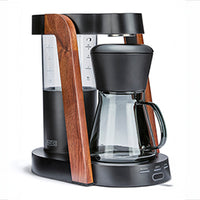 Ratio Eight S2
Ratio Eight S2
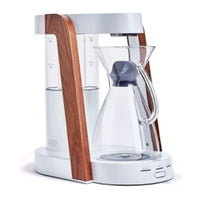 Ratio Eight Original
Ratio Eight Original
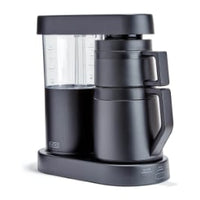 Ratio Six
Ratio Six
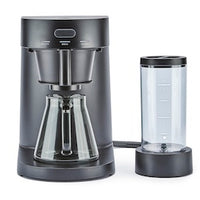 Ratio Four
Ratio Four
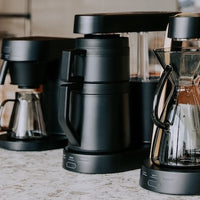 Compare Machines
Compare Machines






